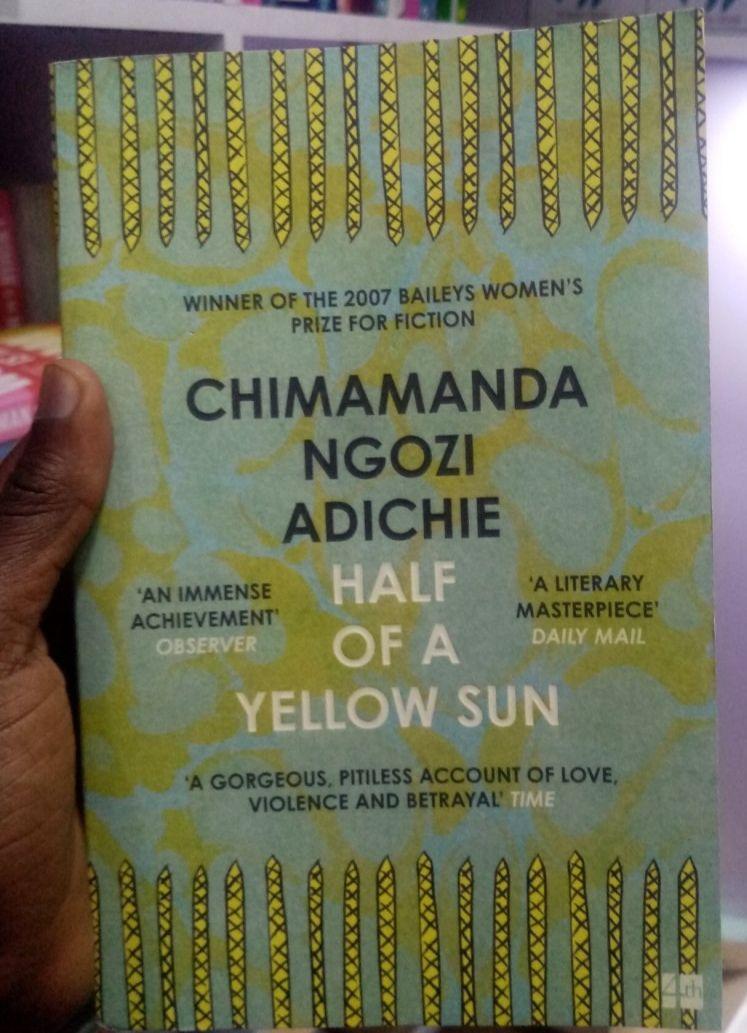About the Author.
Chimamanda Ngozi Adichie is a Nigerian writer, from the Igbo family (Enugu)
“The world was silent when we died.”
This casual statement he once heard is used as the title of a book written by one of the characters in this novel, in which Chimamanda Ngozi Adichie chronicles the birth, short and tortured life and death of the State of Biafra: born on the 30th of May, 1967 from Nigeria and forcefully annexed back by the parent state, after a bitter war in which a million died, in January 1970.
Most of us, I suspect, do not know about this short-lived country. Even Wikipedia calls the war between Biafra and Nigeria a “civil war”, thus denying legitimacy to the erstwhile nation: even though a number of countries recognised it. Since history is always written by the victors, the voice of the losers are often submerged in the general background noise.
I listened to a talk by the author – a very impressive one – about the danger of the “single story”: the one that has been foisted on the world by the erstwhile colonial powers and called “history”. These are opinions which are taught as facts, which tend to show an uncivilised “third world”, and the West’s “civilising” influence. This is so much bovine excrement. The colonial powers went into Asia and Africa to loot, and when the loot was finished, exited leaving miserable poverty and the flames of mutual hatred in the minds of people. This is the story which is not told.
Ms. Adichie also warns us about the “secondary story” in the speech; that is, starting the story from the second chapter, ignoring the first. Examples are plentiful – Palestinians attacking the peaceful state of Israel, without mentioning the death and displacement of thousand of Palestinians to create the said country; mutual hatred between India and Pakistan, without mentioning the hatred fomented by the British which resulted in the partition; endemic poverty and tribal violence in Africa, without mentioning the years of occupation by the West which created them. Up till recently, world history was made up of these secondary stories, which served as the “one story” which the former colonial powers wanted to propagate.
It is heartening to note that things are changing. People like Chimamanda are using the most powerful medium available to humans since the dawn of civilisation to bring about that change: the medium of the narrative. And it is here that the defeated people have an immense power which cannot be suppressed.
The world was silent when many died. But now it will have to listen, as the dead tell their story from beyond the grave.
As the British colonists left Nigeria, they did what they were expert at doing: drawing artificial national boundaries and inciting hatred in the minds of the people they ruled. So after a period of uneasy calm, Nigeria erupted in riots. The powerful Hausa people massacred the Igbo minority, whom they considered to be enjoying more benefits than was due them (see anything familiar here?), and the Igbo declared independence from Nigeria, and the state of Biafra was born. However, Nigeria could not let go of the oil-rich south: so war was declared. In a bitter battle which lasted two and a half years which left a million dead and the country devastated, Biafra was subjugated and wiped off the map.
Ms. Adichie passes the harsh white light of history through the prism of individual experience to create overlapping rainbows of narratives. In this, her style is similar to that of Paul Scott; however, whereas Scott’s narrative is an Indian tapestry where one has to search among the intricate coloured strands to see a pattern (or multiple conflicting patterns), Chimamanda’s work has all the blunt beauty of African art: the uncomplicated lines and the simple patterns which makes the medium all but transparent so that the narrator is talking directly to the listener. Scenes of utter despair and brutality are described very matter-of-factly, in almost Hemingway-esque prose. We are all sitting around a metaphorical campfire, listening to the author telling her story in uncomplicated prose.
But it does not mean that there are no nuances. The name, Half of a Yellow Sun, itself signifies separation, a paring; the fact that it is a reference to the Biafran flag makes it all the more significant. One of the three main characters through whose viewpoints we experience the tale, Olanna, is one of set of fraternal twins. Like twins in a fairy tale, the sisters are of diametrically opposite natures – Olanna is beautiful, revolutionary and optimistic; while her sister Kainene is plain, cynical and pessimistic. Of course, things are not so simple as they seem, and the sisters’ characters unfurl as the story progresses: showing us more and more layers, as the siblings move through their lives, facing love, hatred, betrayal, separation and loss against a nation that is slowly coming apart at the seams.
Another character through whose eyes we see the tragedy of Biafra is Richard Churchill, Kainene’s lover – an Englishman who has “gone native”. Richard is interested in Igbo pottery, and is ostensibly researching it. He is also trying to write a book which never seems to take shape – like character from a Kafka story, Richard plods on, reaching nowhere.
But for me, the character who holds the novel together is Ugwu, houseboy of Odenigbo, Olanna’s boyfriend. As we move across the Nigeria of the early sixties to the Biafra of the late sixties and then again, back to a unified Nigeria in 1970, Ugwu grows from child to man – in more ways than one. In the end, he becomes Richard’s spiritual heir of sorts, telling the story of the Igbo people of Nigeria, which Richard could never accomplish.
Themes of the Novel include:
- Fertility of war
-The consequences of war
-unnecessary war
-Nothing is achieved after war
- Love
-Love tested by disloyalty
-Colonization and oppression
Reviewed by Bennet Owuonda
Buy this book from Nuria Store.




